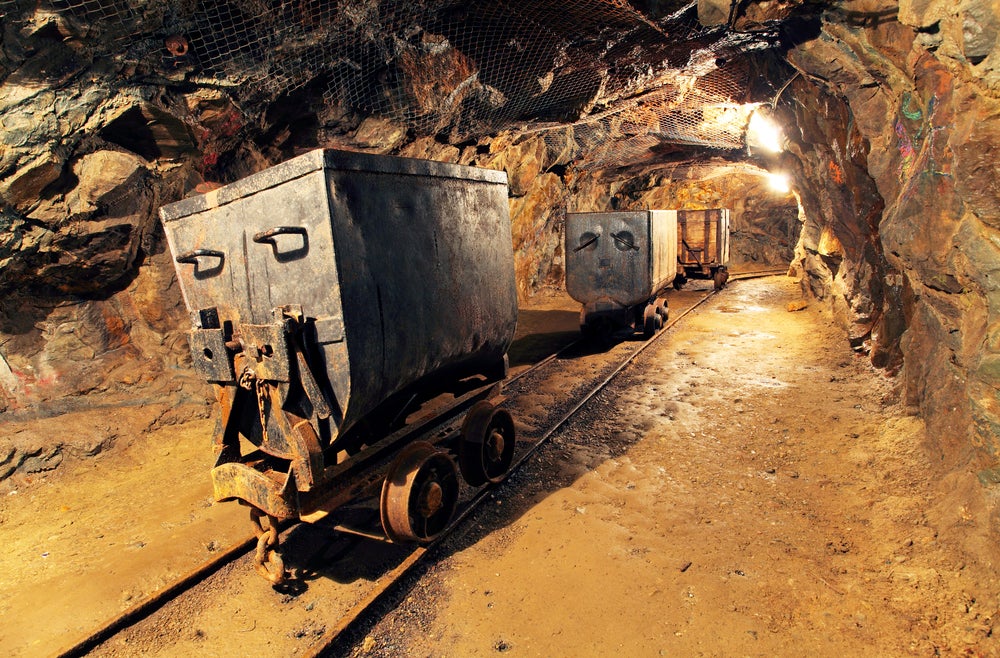
Australia and South Africa are just two of the five countries with the largest gold mine reserves in the world.
Usage of the metal dates back at least 5,000 years to Ancient Egyptian times, where it was used to decorate tombs, temples and other objects.
In modern day society, gold is used for various purposes, including monetary uses, jewellery and electronics.
But, with gold mine production falling by 1% from 2018’s figures to 3,531 tonnes in 2019, according to the World Gold Council, the concept of peak gold – when the world has mined the highest possible amount of the metal it can in any one year – may not be far away.
Here, NS Energy notes the five countries with the largest gold mine reserves as of 2020, according to data from the US Geological Survey (USGS).
Top five countries with the largest gold mine reserves in the world
1. Australia – 10,000 tonnes
Australia is way out in front as the country with the largest gold mine reserves in the world at 10,000 tonnes.
The nation was the second-largest gold producer behind China in 2019, after ramping up its production levels to 330 tonnes from 315 tonnes in 2018.
It is home to some of the biggest gold deposits in the world, with Newcrest’s Cadia Valley mine in New South Wales the largest facility of its type in the country.
BHP, the biggest mining firm in the world, is headquartered in Melbourne, while the second-largest company Rio Tinto has a number of mines across Australia.
2. Russia – 5,300 tonnes
Russia is ranked second on the USGS’s list of the countries with the biggest gold mine reserves in the world with 5,300 tonnes – nearly half the amount of Australia.
While it remained the third-highest producer of the metal in 2019, its output dipped slightly to 310 tonnes from 311 tonnes in 2018.
Polyus Gold’s Olimpiada gold mine in the Krasnoyarsk region of Eastern Siberia, Russia, is the third-largest operational gold deposit in the world.
It has 24 million ounces of proven and probable reserves, with up to 39 million ounces in measured, indicated and inferred mineral resources.
3. South Africa – 3,200 tonnes

In third-place on the list of biggest gold mine reserves is South Africa with 3,200 tonnes.
Up until 2006, it was the largest gold-producing country in the world – and in 1970, it produced the highest-ever production levels of the metal at 995 tonnes.
But it has now slipped down to being just the 12thbiggest gold producer, after its output dropped from 117 tonnes in 2018 to 90 tonnes in 2019.
South Africa is home to Gold Field’s South Deep gold mine, which is the largest facility of its kind in the world with 32.8 million ounces of mineral reserves.
4. US – 3,000 tonnes
The US is the country with the fourth-largest gold mine reserves in the world at 3,000 tonnes.
Despite its production levels falling from 226 tonnes in 2018 to 200 tonnes in 2019, it is still the fourth-largest producing nation of the metal.
Newmont’s Carlin Trend mine in Nevada is the sixth-largest gold facility in the world, while Barrick’s Cortez mine, which is also in Nevada, comes in 10thon the list.
5. Indonesia – 2,600 tonnes
Indonesia ranks in fifth-place on the list of the countries with the biggest gold mine reserves in the world with 2,600 tonnes.
It is the sixth-largest producer of the metal in the world, after its output grew significantly from 135 tonnes in 2018 to 160 tonnes in 2019.
Freeport’s Grasberg mine in the Papua province is the second-biggest operational gold deposit in the world and produced 2.69 million ounces of the metal in 2018.






